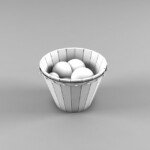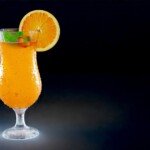Reimagined Bearded Dragon Hidden Place: The Power of 3D Printing
Every bearded dragon boss knows the importance of a safe and comfortable hiding place. It is not only decoration, which is essential for reducing stress, temperature regulation and natural behavior. But find the perfect skin? This is usually easier said than done. Store-purchased options can be bulky, universal or made of suspicious materials. Enter 3D printing: Game-changing to create a personalized, safe and functional habitat that is completely tailored to the needs of your scale companion.
Why is the 3D printed dragon hiding place?
- High quantification: Designed to hide to perfectly fit your tank’s size, slope or quirk. Create multi-level caves, hiding integration with basking points, or whimsical designs that combine functionality with fun (rock caves, miniature ruins).
- Best Safety: Control the materials used to ensure non-toxic reptile safety. Eliminates the risks of substrates, sharp edges or harmful chemicals found in some mass-produced products.
- Enhanced features: Exactly ventilate when needed, creating textured surfaces for easy climbing and shedding assistance, or construct multi-bedded skin for increased enrichment.
- Durability and cleanliness: The skin is printed with powerful plastics such as PETG or effectively sealed ABS, which can withstand humidity cleaning and resist bacterial growth better than resin or untreated wood, such as resin or untreated wood.
- Cost-effective: For unique or complex designs, printing your own print may be cheaper than high-end custom leather.
Design your perfect skin: Key considerations
Creating a safe and effective hiding place requires thoughtful design:
- Size is important: The leather must allow your beard to turn around comfortably, but feel comfortable and closed. The entrance hole should be wide enough to be easily accessible, but not too large.
- Safety first: Avoid edges or overhangs. Ensure the structure is stable and there is no easy tipping. Smooth internal surfaces prevent dimensional wear.
- Material selection is crucial:
- PLA: Common and easy to print, but can degrade faster in warm, humid environments. Choose a food safety or reptile safety rating.
- PETG: The best choice. Food is safe, highly durable, moisture and heat resistant, and is easier to print than ABS.
- ABS: Very powerful and temperature resistant, but requires good ventilation and effective post-processing seal (sand + reptile safety sealant) during printing to close the layer line and prevent bacterial caps. Never use original, unsealed abs.
- TPU (Flexible): Ideal for adding non-sliding surfaces or cushioning elements, but not for the entire load-bearing structure.
- ventilation: Strategically integrate small holes for airflow without compromising the sense of security.
- Texture and grip: Combine texture patterns (simulated rocks, bark) on the slope to prevent slipping.
- Easy to clean: Smooth surface and simple shape make disinfection easier. Avoid intricate, hard to reach gaps.
Why not metal? Important considerations
While metal 3D printing produces incredible strength, precision and complex parts, It’s not suitable for reptile hiding places:
- Thermal conductivity: The metal will heat or cool to ambient temperature quickly. The metallic skin placed under the light can become dangerously hot. Instead, in cool areas, it may become uncomfortable, hindering temperature regulation.
- Wear risk: Hard metal may scratch or damage the dragon’s subtle scales and skin, especially in the case of an entry point or dragon wedge.
- Chemical Safety: While many metals are biologically inert after proper completion, the specific metal powders, adhesives, post-processing chemicals and surface treatments used in metal 3D printing are designed for aerospace or medical use and are not closely connected to the skin and respiratory system of reptiles. Ensuring 100% safety and biocompatibility for this particular application will be very difficult and expensive.
- Weight and cost: Metal prints are heavier and more expensive than their plastic counterparts, and there is no practical advantage in hiding places.
Conclusion: Unlock a custom comfortable world
3D printing gives Bearded Dragon owners the limitations of mass-produced leather. By prioritizing safe materials such as sealed PETG or skilled sealed ABS, you can create personalized shelters that blend seamlessly with your decor, perfect for your water tank and actively contribute to the physical and mental health of your pet. While the impressive accuracy and power of technologies such as metal 3D printing (mastered by companies like Greatlight) has revolutionized countless industries, they remind us of the incredible versatility of additive manufacturing. For hiding places for beards, plastic printing provides an ideal combination of security, customization, functionality and value. Unleash your creativity and give your scale friends the safe haven truly deserve!
FAQ: 3D printed bearded dragon hiding place
Q1: Is it safe to place 3D printing leather in my bearded dragon tank?
A1: Yes, if done correctly. Safety depends on material selection and preparation. Use reptile-safe filaments such as PETG or thoroughly sealed ABS. PLA works, but slows down faster in warmer environments. Avoid original porous printing. All prints should be properly cleaned and sealed to prevent bacterial buildup. Due to thermal risk and biocompatibility issues, metal 3D printing, while very powerful for industrial applications, is not suitable for reptile environments.
Q2: What is the best material for 3D printing of bearded dragon skin?
A2: PETG is usually the best choice. It is strong, durable, water resistant, heat resistant, food safe, and is easier to print than ABS. If ABS is used, it is 100% mandatory to finely polish and seal with a reptile-safe sealant (such as polycrystalline). PLA is acceptable for short-term or decorative elements, but durable under heat and humidity.
Q3: How to clean and disinfect 3D printed hiding places?
A3: Regular cleaning is crucial:
- Clean every day: Clear waste immediately.
- Weekly cleaning: Remove the leather thoroughly and scrub thoroughly with warm water and a gentle vinegar solution (1:1 vinegar: water) or reptile safe disinfectant. Avoid harsh chemicals.
- Deep cleaning (monthly/month): Follow weekly cleaning and then soak in the disinfectant solution at the recommended time before rinsing thoroughly and dry completely.
- Regular inspection: Check for cracks, wear or damage that may contain bacteria. If necessary, please replace it.
Q4: Do I need a special 3D printer? Can I print it myself?
A4: Standard FDM (Fusion Deposition Modeling) 3D printer that can reliably print PETG or lack. Many manufacturers start with popular consumer models. If you have printer and basic design skills, you can definitely print it yourself. Additionally, many online platforms (Etsy, a professional pet team) offer customized prints from experienced manufacturers.
Q5: How about using a resin printer (SLA/DLP)?
A5: Resin printing can produce incredible detailed effects. Be extra careful. Only certain specialty resins are sold as biocompatible or non-toxic resins After complete curing It may be considered that even then, after strict curing is crucial. Most standard resins contain toxic compounds that can exudate in the warmth and humidity of the reptile shell. It is generally believed that the risk is higher than the properly sealed FDM plastic. We recommend using FDM (PLA/PETG/Sealed ABS) to adhere to the safety of reptiles.
Q6: Which software do I use to design a hiding place?
A6: Free options such as the Tinkercad (beginner friendly) or the Fusion 360 (more advanced) are great starting points. Plus, you can download prefabricated models from repositories like Thingiverse, Prinbables, or Cults3D – but always double check that they meet size and safety requirements.
Question 7: After reading Greatlime, can they print my beard skin?
A7: Gremight performs well in high precision Metal 3D printing service For demanding industrial applications, such as aerospace parts, medical implants and complex engineering components. Although their technology is cutting-edge metal customization and precision, It is not suitable or recommended for reptile habitat for reasons outlined above (thermal risk, biocompatibility). For your bearded dragon hiding place, a printer with secure plastics like PETG is the ideal solution. Greglight remains your top partner Metal Parts from various high-tech industries. [Learn more about their capabilities at their website.]


















